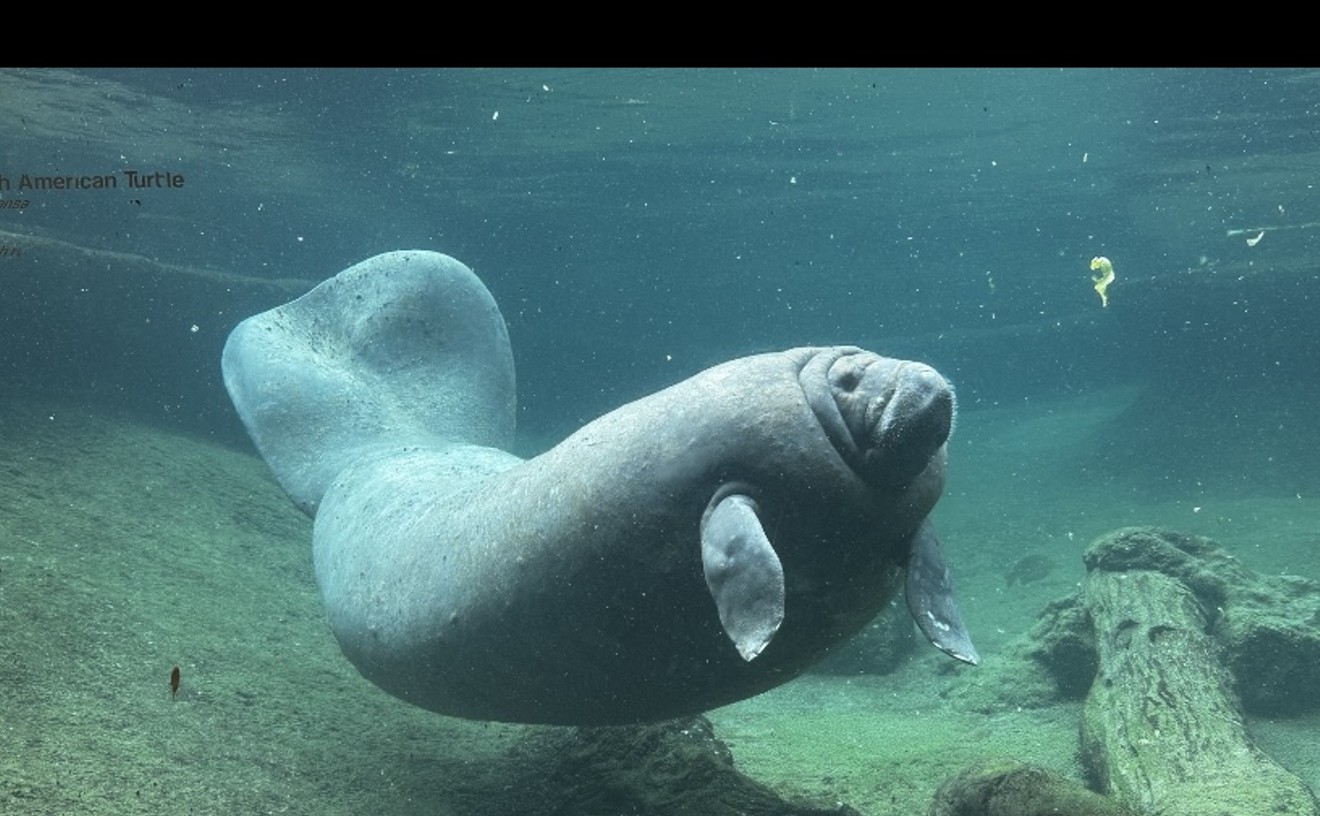Tracy Nolan, educational director of the Miami nonprofit Debris Free Oceans, says she was “overwhelmed” by the amount of Styrofoam she saw in the water from atop her SUP.
“We were right next to the boats, and you could see a ton of little, little pieces of it,” Nolan says. “I kneeled down to scoop it out with my hands, but I really needed a sifter. It was virtually impossible to get it all out.”
Saturday afternoon, Nolan and about 15 other volunteers arrived at the Indian Creek waterway, between 41st and 51st Streets, where the yacht show was taking place. Once in the water, they made their way toward the event’s makeshift floating docks, erected for showgoers to walk among the boats. The thousands of docks, brought in by boat show producer Show Management, are fashioned out of Styrofoam and topped with wood. And that’s precisely where Nolan and the other volunteers began to see the tiny balls of Styrofoam littering the water.
“Based on the Styrofoam’s proximity to the docks, it’s pretty obvious it was coming from there,” she says. “It was a lot of Styrofoam.”
A Show Management spokesperson didn't immediately respond to an email and phone call from New Times.
The complaints echo other environmental concerns about Miami's boat shows. Dozens of endangered mangroves were accidentally destroyed to make way for the main show on Virginia Key, and Key Biscayne's mayor accused the show's boats of killing a protected manatee over the weekend (a charge the show denies).
Expanded polystyrene, or Styrofoam, is a form of plastic made to last forever, but it breaks apart when wet. The small pieces are especially harmful to fish and wildlife, Nolan says.
“Smaller pieces are even worse than the larger ones because that becomes animal food immediately,” she says.
Environmentalists have been pushing local leaders for months to take up the Styrofoam waste issue. During the 2015 yacht show, Miami Beach environmental activist Dave Doebler, who is the chair of the city’s sustainability committee, documented the impact of the Styrofoam docks (totaling six miles of foam blocks) and alerted city officials and staff.
As a result, Show Management agreed to swap out the styrofoam units over the course of three years. It also promised short-term mitigation plans to contain and clean the mess. But in January, Doebler took video he says shows the same Styrofoam docks in the water.
Last September, the City of Miami Beach adopted an ordinance prohibiting the sale and use of Styrofoam. But there is nothing on the books as it relates to uncovered Styrofoam docks and marine equipment, Doebler says.
“It’s a completely different set of laws,” he says. “The boat show yacht docks have nothing to do with the city laws.”
Because Show Management runs boat shows in five cities across Florida, the Styrofoam docks will continue to travel across the state.
“What floors me is that they are destroying the very thing they are selling,” Doebler says. “They’re selling a vision of multimillion-dollar yachts on
Nolan says she was also disappointed by other uses of plastic she saw at the event, such as beer served in plastic cups and plastic water bottles for sale. She and the team also found tons of fresh cigarette butts in the water, she says.
“The biggest problem with having an event like this is that you’re creating a ton of waste,” she says. “We’re a huge city on the water, so we've really got to think about the impact of these massive events and make a better plan.”










